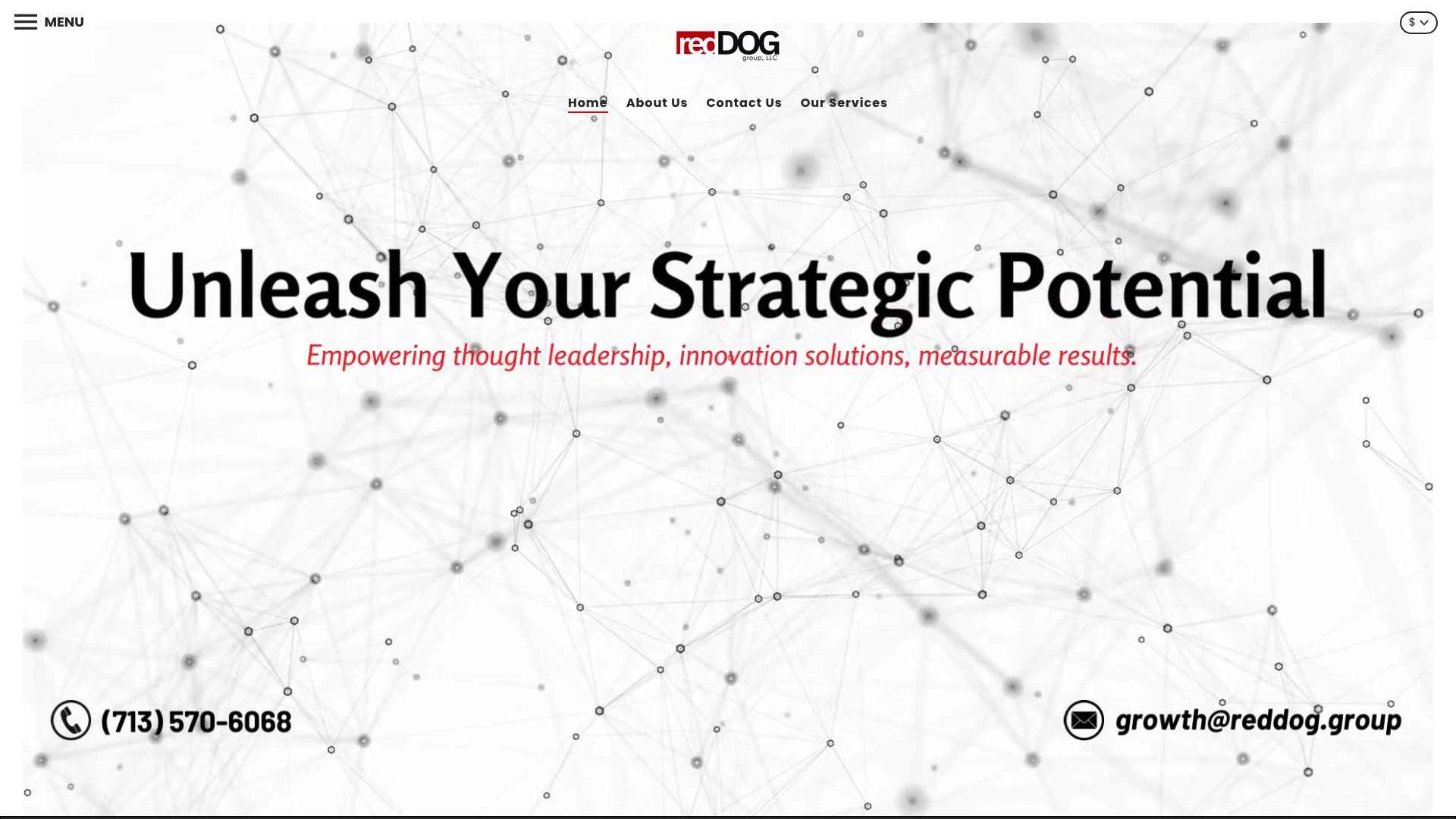
Understanding Why Leverage Retail Insights Matters
Posted on
Retail is no longer just about selling products and hoping for the best. Businesses that harness retail insights can see up to 20 percent higher revenue growth than those using old-school methods. That sounds huge, right? But what really flips the script is that these insights offer more than just bigger profits. They unlock a whole new way to understand people, spot what they want before they’ve even asked, and outsmart uncertainty in every decision.
Table of Contents
- What Are Retail Insights And Their Importance?
- Why Leverage Retail Insights For Strategic Growth?
- How Retail Insights Impact Consumer Behavior And Sales?
- Key Concepts Behind Data-Driven Retail Strategies
- Real-World Applications Of Retail Insights In Business
Quick Summary
| Takeaway | Explanation |
|---|---|
| Leverage data for strategic growth | Retail insights enable businesses to make informed decisions that drive sustainable competitiveness in the market. |
| Analyze customer behavior for insights | Understanding purchasing patterns helps personalize marketing strategies and improve customer experiences. |
| Use insights to optimize operations | Retail insights streamline inventory management and enhance supply chain efficiency while minimizing costs. |
| Predict trends for proactive planning | Anticipating market shifts and consumer preferences allows organizations to stay ahead of competitors. |
| Implement advanced analytics for success | Companies utilizing sophisticated data approaches are more likely to improve customer acquisition and retention significantly. |
What are Retail Insights and Their Importance?
Retail insights represent the strategic understanding derived from analyzing comprehensive data across various retail operations. These insights go beyond simple numerical observations, transforming raw information into actionable intelligence that drives business performance. By systematically examining customer behaviors, sales patterns, inventory movements, and market trends, businesses can make informed decisions that directly impact growth and competitiveness.
The following table summarizes the main components of retail insights and their specific roles in driving business performance.
| Component | What It Analyzes | Role in Retail Strategy |
|---|---|---|
| Customer Behavior Analysis | Purchasing patterns, preferences, motivations | Personalize marketing, improve customer retention |
| Sales Performance Metrics | Revenue streams, product performance, seasonality | Track growth, inform pricing and promotional strategies |
| Inventory Management | Stock levels, demand prediction, supply chain | Minimize costs, improve inventory turnover and operational flow |
| Market Trends Analysis | Industry-wide data, consumer shifts | Predict trends, adapt to changing markets |
| Feedback & Research Review | Customer feedback, survey results | Identify new opportunities, address pain points |
Understanding the Core of Retail Insights
Retail insights are multifaceted analytical interpretations that help organizations decode complex market dynamics. They emerge from meticulous examination of data collected through multiple channels such as point of sale systems, online transactions, customer feedback, and market research. Our comprehensive guide on retail analytics provides deeper context into how these insights are generated and utilized.
The fundamental components of retail insights typically include:
- Customer Behavior Analysis: Understanding purchasing patterns, preferences, and motivations
- Sales Performance Metrics: Tracking revenue streams, product performance, and seasonal variations
- Inventory Management: Monitoring stock levels, predicting demand, and optimizing supply chain efficiency
Strategic Significance of Retail Insights
According to McKinsey & Company, businesses that effectively leverage data-driven insights can experience up to 20% higher revenue growth compared to competitors who rely on traditional decision-making approaches. These insights enable retailers to:
- Personalize customer experiences
- Predict market trends
- Optimize pricing strategies
- Reduce operational inefficiencies
- Make proactive strategic decisions
By transforming complex data into clear, actionable recommendations, retail insights serve as a critical navigational tool for businesses seeking sustainable growth in an increasingly competitive marketplace. The ability to understand and anticipate market dynamics provides companies with a significant competitive advantage, allowing them to adapt quickly and strategically to changing consumer needs.
Why Leverage Retail Insights for Strategic Growth?
Leveraging retail insights is a critical strategy for businesses seeking sustainable competitive advantage in today’s complex market landscape. These insights provide a comprehensive understanding that enables organizations to make data-driven decisions, optimize operational efficiency, and create targeted customer experiences.
Strategic Decision Making through Data Intelligence
Retail insights transform raw data into actionable intelligence, allowing businesses to move beyond intuitive guesswork. By systematically analyzing customer behaviors, market trends, and performance metrics, organizations can develop precise strategic approaches. Our guide on ecommerce growth strategies further illustrates how strategic insights drive business expansion.
Key strategic advantages of leveraging retail insights include:
- Predictive Performance Modeling: Anticipate market shifts and consumer preferences
- Resource Allocation Optimization: Strategically invest in high-potential areas
- Risk Mitigation: Identify potential challenges before they escalate
Competitive Advantage Through Advanced Analytics
According to Gartner Research, companies that effectively utilize advanced analytics are 23 times more likely to acquire customers, 6 times more likely to retain customers, and 19 times more likely to achieve above-average profitability.
![]()
This statistical evidence underscores the transformative power of retail insights in creating sustainable business growth. By understanding nuanced market dynamics, businesses can develop:
- Personalized marketing strategies
- Dynamic pricing models
- Targeted product development
- Enhanced customer engagement approaches
Ultimately, retail insights serve as a strategic compass, guiding businesses through complex market environments by providing clear, data-driven direction. The ability to translate complex information into meaningful strategic actions represents the core value of leveraging retail insights for organizational growth and long-term success.
How Retail Insights Impact Consumer Behavior and Sales?
Retail insights provide a profound understanding of consumer psychology, enabling businesses to predict, influence, and respond to customer behaviors with unprecedented precision. By decoding complex purchasing patterns and emotional triggers, organizations can create more targeted and effective sales strategies that directly impact revenue generation.
Decoding Consumer Decision Processes
Modern consumer behavior is intricate and multidimensional, influenced by numerous psychological and environmental factors. Retail insights help organizations unravel these complex decision-making processes by analyzing data points that reveal underlying motivations and preferences. Our strategic guide on retail strategy provides additional context for understanding these intricate consumer dynamics.
Key areas where retail insights transform consumer understanding include:
- Emotional Purchasing Triggers: Understanding psychological motivations behind buying decisions
- Contextual Purchasing Patterns: Analyzing how external factors influence consumer choices
- Personalization Opportunities: Creating targeted experiences that resonate with specific consumer segments
Quantifying Consumer Behavior Impacts
According to Harvard Business Review, companies that effectively leverage consumer behavior insights can increase marketing efficiency by up to 30% and improve customer retention rates by 25%. These insights enable businesses to:
- Develop highly targeted marketing campaigns
- Create personalized product recommendations
- Design more engaging customer experiences
- Predict and proactively address potential customer churn
By transforming raw data into actionable intelligence, retail insights bridge the gap between consumer perception and business strategy.
This table presents key statistics from leading research cited in the article, highlighting the measurable business impact of leveraging retail insights.
| Source | Statistic/Outcome | Business Impact |
|---|---|---|
| McKinsey & Company | Up to 20% higher revenue growth | Stronger financial performance |
| Gartner Research | 23x more likely to acquire customers | Enhanced customer acquisition |
| Gartner Research | 6x more likely to retain customers | Improved customer retention |
| Gartner Research | 19x more likely to achieve above-average profitability | Higher long-term profitability |
| Harvard Business Review | Up to 30% improvement in marketing efficiency | Better marketing ROI |
| Harvard Business Review | Improvement of customer retention by 25% | Increased loyalty and repeat business |
| Deloitte Digital | Up to 40% improvement in customer experience metrics | More satisfied and engaged customers |
Key Concepts Behind Data-Driven Retail Strategies
Data-driven retail strategies represent a sophisticated approach to business management that transforms raw information into powerful strategic frameworks. By integrating advanced analytical techniques and comprehensive data collection methods, organizations can develop nuanced strategies that respond dynamically to market demands and consumer behaviors.
Foundational Elements of Data-Driven Strategy
The core of data-driven retail strategies lies in creating a holistic ecosystem of information gathering, analysis, and strategic implementation. This approach goes beyond traditional decision-making processes by utilizing advanced technologies and analytical frameworks. Our comprehensive guide on digital marketing in retail offers additional insights into how digital technologies transform strategic planning.
Critical foundational elements include:
- Integrated Data Ecosystems: Connecting multiple data sources for comprehensive insights
- Advanced Predictive Modeling: Using statistical techniques to forecast market trends
- Real-Time Performance Analytics: Monitoring and adapting strategies instantaneously
Strategic Implementation and Technological Infrastructure
According to MIT Sloan Management Review, successful data-driven strategies require more than just technological infrastructure. They demand a fundamental cultural shift toward data-centric decision making.
Key technological and strategic considerations include:
- Implementing robust data collection mechanisms
- Developing cross-functional analytical capabilities
- Creating flexible technological architectures
- Ensuring data privacy and security protocols
By embracing a comprehensive approach that combines technological sophistication with strategic thinking, businesses can transform data from a passive resource into an active driver of organizational success. The ability to interpret complex information and translate it into actionable strategies represents the pinnacle of modern retail management.

Real-World Applications of Retail Insights in Business
Retail insights transform theoretical data analysis into practical business solutions across multiple operational domains. By translating complex data patterns into actionable strategies, organizations can create more responsive, efficient, and customer-centric business models that drive sustainable growth and competitive advantage.
Operational Optimization through Strategic Insights
Businesses leverage retail insights to streamline core operational processes, making data-informed decisions that minimize waste and maximize efficiency. Our guide on retail expansion strategies highlights the importance of strategic data utilization in scaling business operations.
Practical applications of retail insights span critical business functions:
- Inventory Management: Predicting stock levels with unprecedented accuracy
- Supply Chain Optimization: Reducing logistical inefficiencies
- Demand Forecasting: Aligning production with actual market requirements
Customer Experience and Personalization Strategies
According to Deloitte Digital, companies utilizing advanced retail insights can improve customer experience metrics by up to 40%. These insights enable businesses to:
- Create hyper-personalized marketing campaigns
- Develop targeted product recommendations
- Design customer journey maps with precision
- Predict and mitigate potential customer churn
By converting raw data into strategic intelligence, businesses transform traditional reactive approaches into proactive, predictive models. This shift allows organizations to anticipate market trends, customer preferences, and potential challenges before they become significant obstacles, ultimately driving more informed and successful business strategies.
Turn Retail Insights Into Measurable Business Growth Today
Are you struggling to transform your retail data into real business results? The article uncovered how understanding retail insights is key to smarter decision-making, improved inventory management, and stronger customer connections. Yet collecting data is not enough. Without expert strategy and the right processes, opportunities slip away and competitive advantages vanish.
Digital & Business Consulting Services by Reddog Consulting

Let Reddog Group help you unlock the full power of your data. Our proven consulting solutions are designed to convert actionable insights into marketplace performance, higher sales, and lasting brand growth. See how our expertise in omnichannel integration, Amazon FBA, and tailored marketing solutions can bridge the gap for your business. Explore our approach at https://reddog.group and get started today. Your competitors are already investing in retail insights—now is your moment to leap ahead.
Frequently Asked Questions
What are retail insights and why do they matter?
Retail insights are analytical understandings derived from data across retail operations. They matter because they enable businesses to make informed decisions that enhance growth, customer satisfaction, and operational efficiency.
How can leveraging retail insights improve customer experiences?
Leveraging retail insights can enhance customer experiences by allowing businesses to create personalized marketing strategies and targeted product recommendations. Start by analyzing customer behavior to identify their preferences and adjust your marketing efforts accordingly.
What strategies can I implement to effectively leverage retail insights?
To effectively leverage retail insights, focus on integrating customer data from multiple sources and employing advanced analytics techniques. Begin by establishing a framework for data collection and analysis to uncover valuable insights within 30 days.
How do retail insights influence sales performance?
Retail insights influence sales performance by identifying consumer trends and preferences, which can inform pricing and promotional strategies. Use these insights to optimize your product offerings and track performance metrics to enhance revenue generation by up to 20%.
What are the key components to include in a retail insights strategy?
A retail insights strategy should include customer behavior analysis, sales performance metrics, and inventory management. Start by focusing on one component at a time, establishing benchmarks, and measuring results to refine your approach continuously.
How can retail insights help in inventory management?
Retail insights assist in inventory management by predicting stock levels and optimizing supply chain processes. Implement data analysis tools to forecast demand accurately, which can reduce excess inventory by approximately 15%.
Recommended
Contact
1500 Hadley St. #211
Houston, Texas 77001
growth@reddog.group
(713) 570-6068
Marketplaces
Amazon
Walmart
Target
NewEgg
Shopify

Leave a comment: